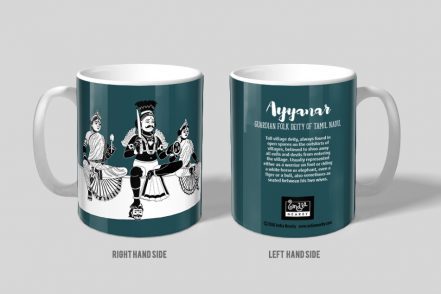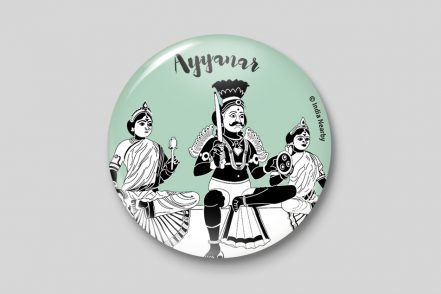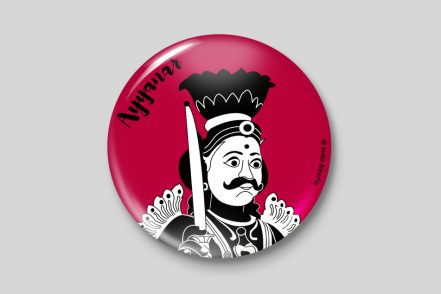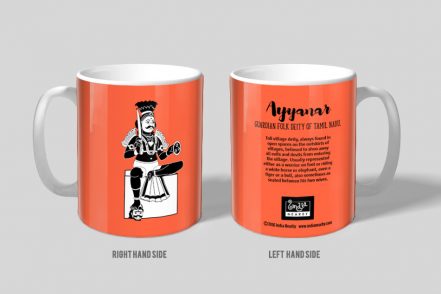Ayyanar, the guardian village deity of Tamil Nadu
On the Village edge
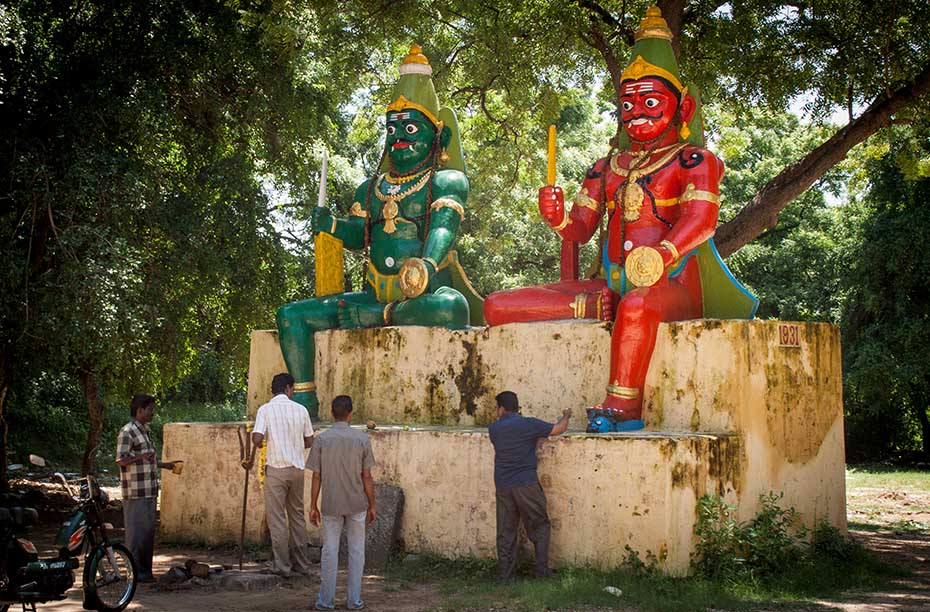
Ayyanar is a village god of Tamil Nadu. If you travel in Tamil Nadu, you are bound to see them just outside the villages – you just can’t miss them!
Ayyanar is big, really big. They are bigger than a hut, tall and imposing where they sit. One leg in a sitting pose, the other holding down a devil’s head – Ayyanar is ready to stand up in action anytime.
Ayyanar God, the protector
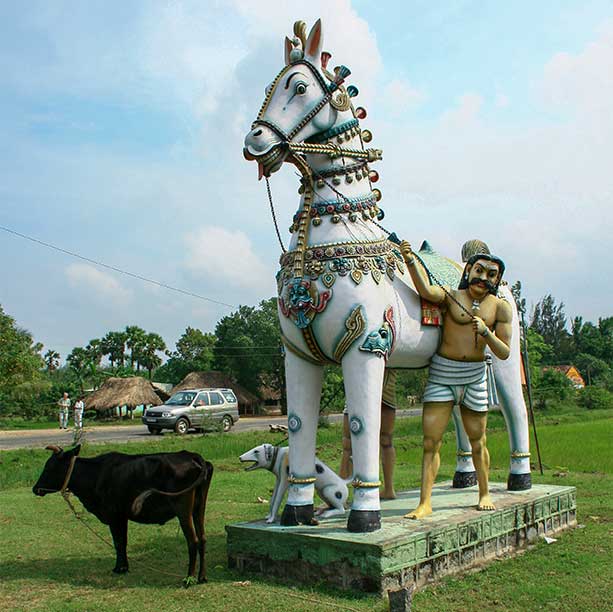
Ayyanar protects villagers, their cattle and harvest; he bestows the monsoons, and drives away evil spirits. Huge Ayyanar idols are worshipped in open grounds surrounded by trees at the edges of rural villages. He is usually represented either as a warrior on foot or riding a white horse or elephant, even a tiger or a bull, also sometimes as seated between his two wives, carrying a sword or whip and wearing a meditation band(Yogapaţţa or Tamil Vāgupaţţai). In keeping with the times, often statues of policemen with modern rifles, dogs, security guards or anyone associated with providing protection as such, accompany huge Ayyanar idols.
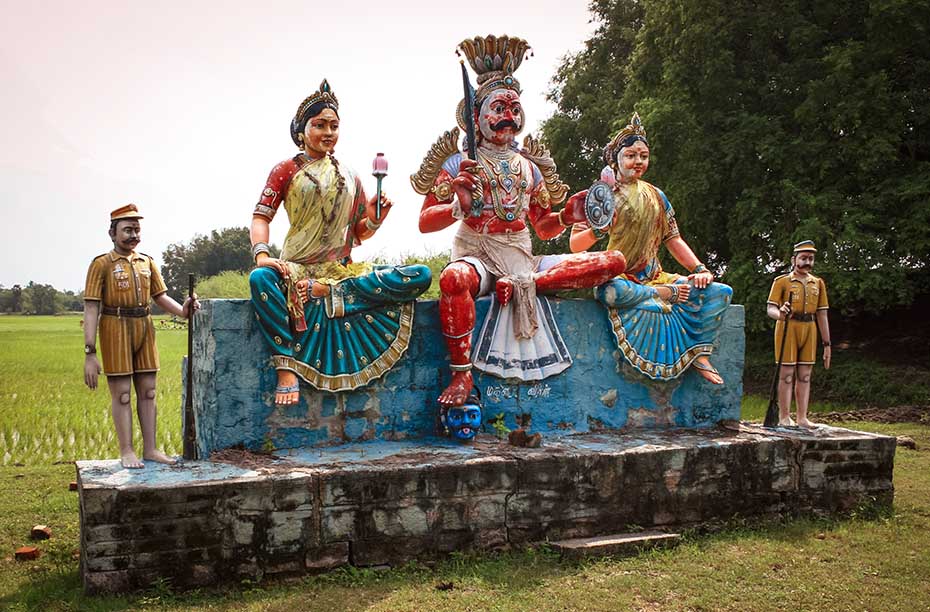
Ayyanar-worship is an ancient tradition, can be assumed to be from pre-Vedic times. The earliest known recorded reference to Ayyanar is found in hero stones to hunting chiefs from Arcot, Tamil Nadu, dated to the 3rd century CE. The popularity of Ayyanar is said to have grown ever more, from the Chola period (9th C) onwards.
The tradition of non-Brahmin priests
Worship of Ayyanar exemplifies the open and inclusive nature of our religious practices and sensitivity towards establishing the means of sustenance for its caretakers. Usually enshrined with some twenty one sub-deities who are the escorts of Ayyanar, he is yearly provided with clay horses to ride around the village during his night-vigil. And so, once finds clusters of these clay horses near and around Ayyanar sites.
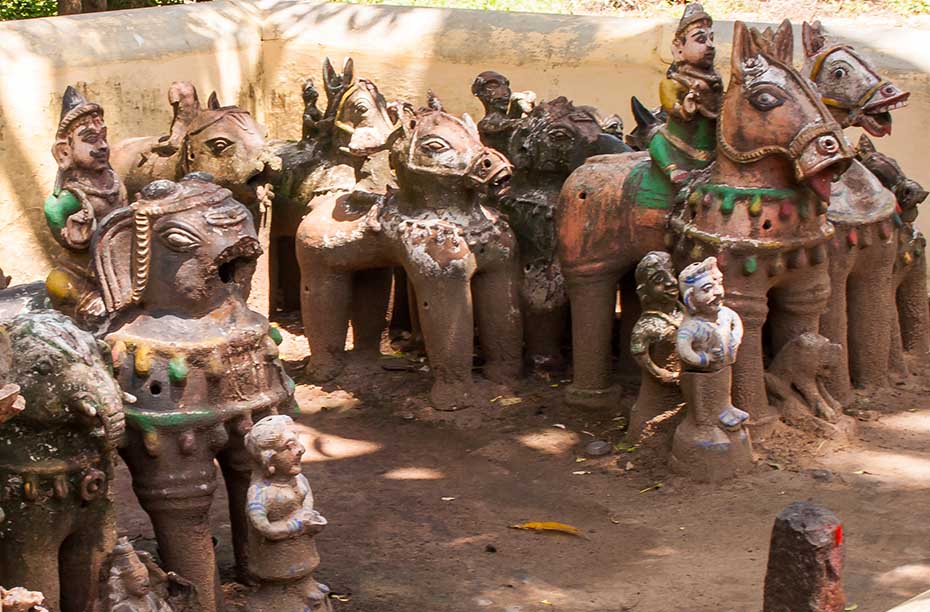
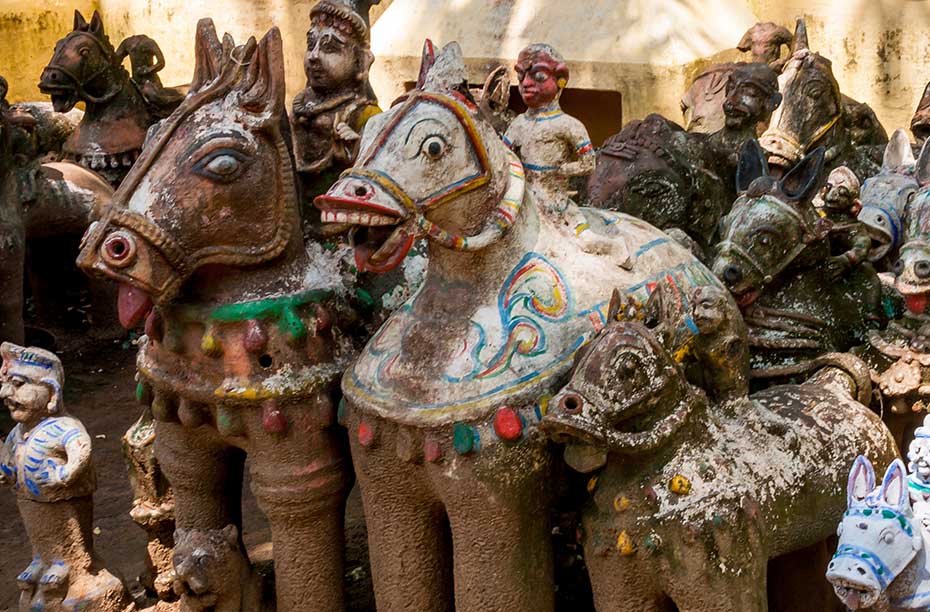
As a tradition, non-Brahmin priests, the village potters-Velars, are the caretakers of Ayyanars. Every year they also create the clay idols ordered by the villagers: life-sized horses, cows and elephants, and human figures. All these pieces are modeled, fired and decorated during the elaborate festival that takes place in spring season. The festival lasts two to three days during which “life” is infused into these terracotta idols.
The pieces are then placed in the outdoor Ayyanar shrine where they stay: gradually worn by sun, wind and rain, and with time, they crumble back into dust – exemplifying a full circle of life!


